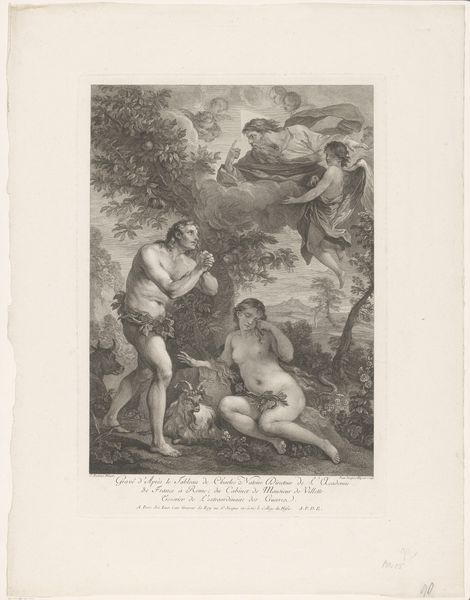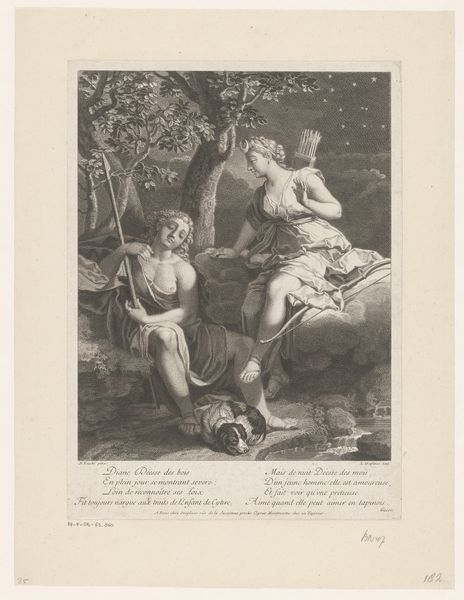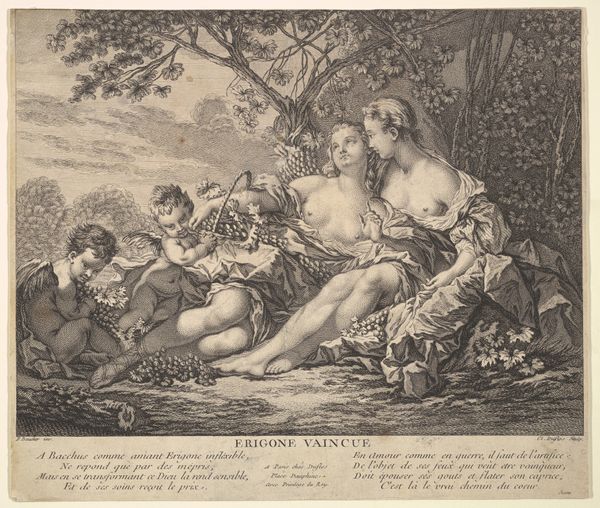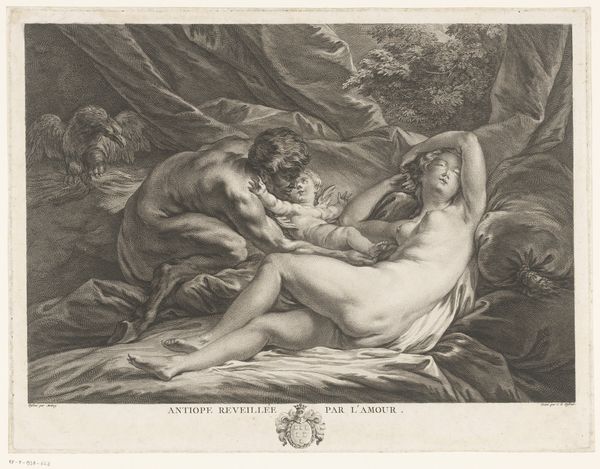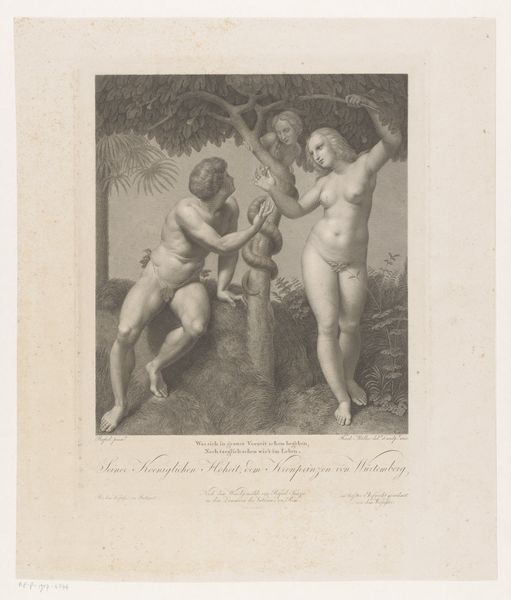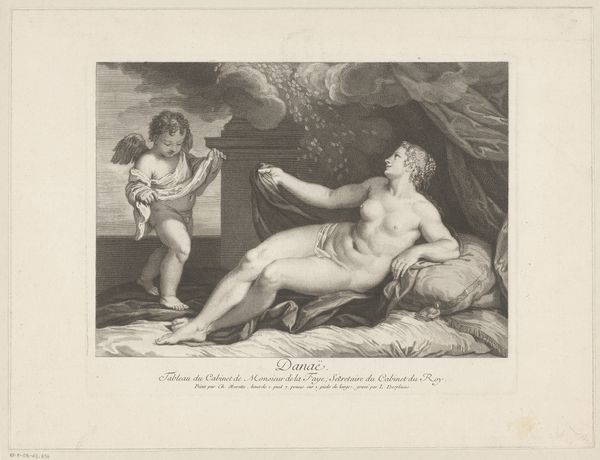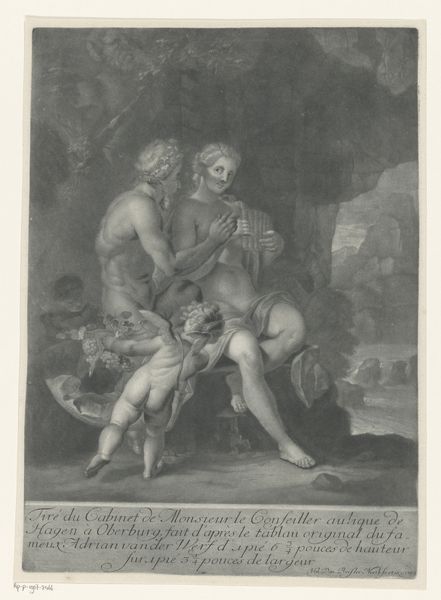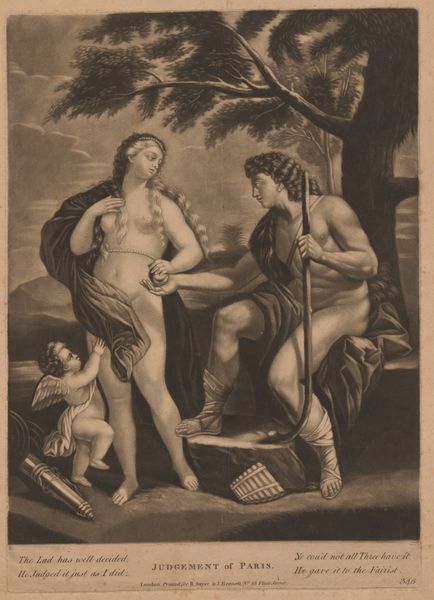
drawing, print, engraving
#
drawing
#
neoclacissism
#
allegory
# print
#
landscape
#
bird
#
personal sketchbook
#
cupid
#
nude
#
engraving
Dimensions: Sheet (trimmed to plate): 8 3/4 × 10 5/16 in. (22.3 × 26.2 cm) Image: 7 5/16 × 10 1/16 in. (18.5 × 25.5 cm)
Copyright: Public Domain
Curator: This engraving from 1779, titled "Venus and Cupid," is by Jean-Baptiste Michel after Carlo Maratti. What are your first thoughts on viewing this piece? Editor: Well, it’s definitely striking. The figures are very classically posed, and there's a real sense of serene elegance. It almost feels like a tableau vivant. I’m curious about how a formalist approach might unpack the composition and what significance can be derived from it. Curator: Indeed. Let's observe the lines at play. Notice how Michel employs delicate, curvilinear lines to delineate the figures. This contributes to the soft, almost dreamlike quality. The positioning of Venus and Cupid creates a pyramidal structure. Does this compositional choice evoke particular ideas for you? Editor: It certainly draws the eye upward. A compositional element such as a pyramid is very stable but still evokes grandeur and classical art ideals. Also, the contrasts created between dark and light... does that relate to some philosophical ideas of that time? Curator: The chiaroscuro contributes to the visual drama and volume. In addition, the stark contrast highlights the textures and sensuality of the figures' skin. The formal elements are aligned with the enlightenment era ideas. Could this engraving possibly represent more than just a depiction of mythological characters? Editor: Possibly. It may seem obvious to suggest they're simply enjoying an allegorical moment, or the harmony of love. Curator: Precisely. Reflect on how each element—line, composition, light—contributes to a cohesive representation. Do these intrinsic properties offer insights beyond the mere narrative? Editor: That makes a lot of sense. Seeing how the elements combine allows for an informed and more sensitive perspective of how to perceive art. Thanks! Curator: My pleasure. Remember, the language of art resides within the art itself. We both learn through engaging this type of thinking more fully.
Comments
No comments
Be the first to comment and join the conversation on the ultimate creative platform.

